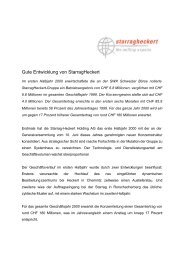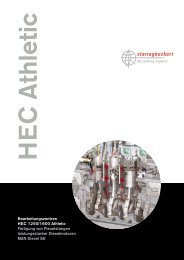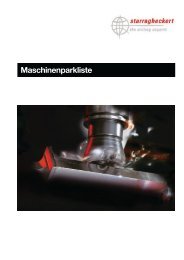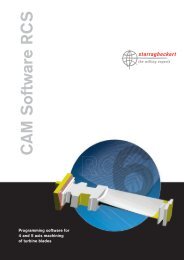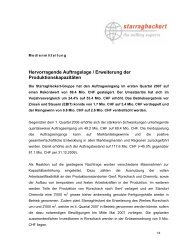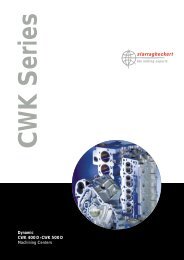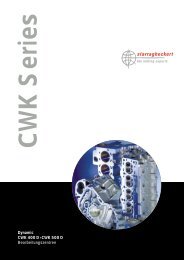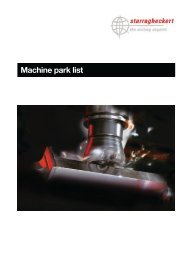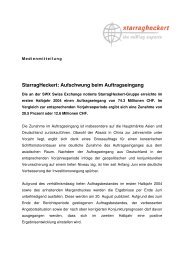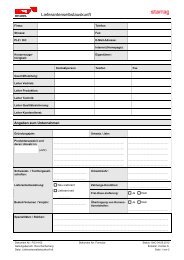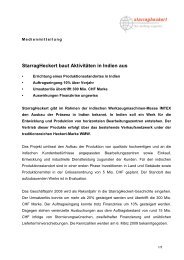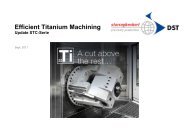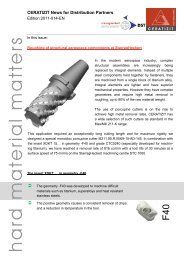You also want an ePaper? Increase the reach of your titles
YUMPU automatically turns print PDFs into web optimized ePapers that Google loves.
68 Consolidated financial statements<br />
––<br />
Interest rate risk<br />
Interest rate risk results primarily from floating<br />
interest rates for bank loans. In some cases, these<br />
interest rates are fixed for short or long terms<br />
through loans with fixed interest rates.<br />
Liquidity risk<br />
Liquidity risk is limited by stipulated cash lines<br />
which cover the peak demand for working capital.<br />
It is continuously monitored through a liquidity<br />
status reports.<br />
Management assumptions and<br />
estimates<br />
Estimates and assumptions are continually evaluated<br />
and are based on historical experience and<br />
other factors, including expectations of future<br />
events that are believed to be reasonable under<br />
the prevailing circumstances. The resulting accounting<br />
estimates will naturally seldom comply<br />
with the actual outcome. Main sources of critical<br />
accounting estimates are:<br />
Evaluation of net realizable values and profit shares<br />
of percentage of completion valued orders: While<br />
preparing the accounts, the company continuously<br />
examines the valuation of various balance<br />
sheet positions which are related with the regular<br />
machine tool business. In this connection assumptions<br />
have to be made regarding costs to complete<br />
and realizable market prices.<br />
Should situations occur which change previous<br />
assumptions regarding realizable income, costs<br />
to complete or percentage of completion, these<br />
assumptions will be adjusted. This may lead to adjustments<br />
of the affected balance sheet items and<br />
to the result. The carrying values of the potentially<br />
affected balance sheet items are included in the<br />
notes 12 (work in progress and finished products)<br />
and 22 (percentage of completion valued contracts).<br />
Business combinations: The net assets of acquired<br />
entities are revalued in accordance with uniform<br />
Group accounting principles and methods as of<br />
the date of acquisition. Intangible assets such<br />
as proprietary technology, brands and customer<br />
relationships are also recognized in the balance<br />
sheet (see also note 14). Any residual amount will<br />
be allocated to goodwill. Assumptions regarding<br />
future market and business developments must be<br />
made at the initial measurement and for the subsequent<br />
impairment tests. A divergence between<br />
actual outcomes and these assumptions can have<br />
a significant impact on the valuation of intangible<br />
assets and on the results.<br />
Provisions for warranty obligations and onerous<br />
contracts: While doing regular business, the company<br />
may be involved in legal disputes. Provisions<br />
for pending disputes are estimated by evaluating<br />
the realistic cash outflow on the basis of existing<br />
information. The final outcome of such a dispute<br />
might require recognition of an adjustment in provisions<br />
in the income statement (see note 19).<br />
The evaluation of current tax liabilities is subject<br />
to the interpretation of tax laws in the respective<br />
countries. Its adequateness will be examined at<br />
the final evaluation and the audit by the tax authorities,<br />
mainly retrospectively for several business<br />
years. Thus, major adjustments in tax expenses<br />
may occur.



